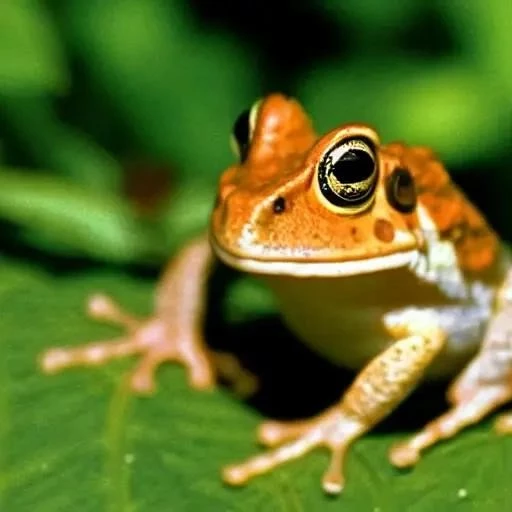
Imagine a thriving flower garden, a vibrant tapestry of colors and fragrances, bustling with life․ While butterflies dance and bees hum, an often-overlooked yet incredibly effective guardian silently patrols the shadows․ We’re talking about the humble toad – a truly remarkable amphibian whose presence signals a healthy ecosystem and offers a natural, sustainable solution to common garden woes․ Far more than just a charming visitor, these nocturnal benefactors are poised to become the unsung heroes of your botanical sanctuary, diligently working to keep pests at bay and enrich your garden’s biodiversity․
For too long, these charismatic creatures have been relegated to the sidelines, overshadowed by their more colorful counterparts․ Yet, by understanding their simple needs and proactively creating an inviting habitat, gardeners can unlock a powerful, organic pest control system․ An Eastern American Toad’s distinct, humming call from a nearby garden isn’t just a pleasant sound; it’s an auditory testament to a balanced, flourishing environment․ Embracing toads means embracing a holistic approach to gardening, one that prioritizes ecological harmony and natural processes over chemical interventions, ultimately fostering a more resilient and beautiful outdoor space for everyone to enjoy․
Key Strategies for Attracting Toads to Your Garden
| Category | Actionable Tips | Why It Helps Toads |
|---|---|---|
| Shelter & Hiding Spots | Create “toad houses” from broken pots, stack loose rocks, or leave small log piles․ Allow leaf litter to accumulate in shady areas․ | Provides cool, moist refuge from predators and sunlight during the day․ Mimics natural habitats like under tree roots or boards․ |
| Water Source | Install a shallow wildlife pond with gently sloping edges or place a shallow dish of water in a secluded spot․ | Essential for hydration, breeding, and keeping their skin moist․ Ponds also attract insects for food․ |
| Food & Pest Control | Eliminate chemical pesticides․ Encourage beneficial insects by planting native flowers․ A light near the garden at night can attract flying insects․ | Toads are voracious insectivores, consuming slugs, snails, mosquitoes, and other garden pests․ Pesticides are harmful to them․ |
| Garden Practices | Avoid electric tillers; Plant dense, low-growing foliage like ferns or hostas for ground cover․ Let parts of your garden go “a little wild․” | Minimizes accidental injury․ Provides natural shade and moisture․ Wilder areas offer more diverse habitat and food sources․ |
For further detailed guidance on creating a wildlife-friendly garden, visit: Wildlife Garden Project
The cornerstone of attracting these invaluable allies lies in meticulously crafting an irresistible habitat․ Toads, like all creatures, seek refuge, moisture, and food․ Providing moist hiding spots is paramount; think beyond conventional garden decor․ A broken green glazed pot, perhaps one you once cherished, can be artfully repurposed into a cozy toad abode when tucked into a shady spot amidst low-lying leaves․ Consider creating several such ‘toad houses’ across your garden, utilizing remnants like terracotta pots tilted on their sides, small log piles, or even carefully placed flat rocks․ These simple yet remarkably effective structures offer essential protection from predators and the scorching sun, becoming indispensable havens for your amphibian residents․
Beyond shelter, a consistent and accessible water source is undeniably crucial․ While frogs might demand a full-fledged pond for breeding, toads are generally content with shallower options, provided they can easily enter and exit․ Digging a small wildlife pond, complete with gently sloping sides and varied depths, serves as an ideal solution, not only for toads but also for newts and a myriad of other beneficial pond life, including dragonflies․ Alternatively, a simple, shallow dish of water replenished daily and placed in a secluded, shaded area can prove surprisingly effective․ The key is to ensure constant access to hydration, allowing their permeable skin to remain appropriately moist, especially during drier periods․
Perhaps the most compelling reason to invite toads into your garden is their unparalleled prowess as natural pest controllers․ These nocturnal hunters are voracious insectivores, diligently consuming a remarkable array of garden nuisances, including slugs, snails, mosquitoes, and various beetles that threaten your prized flowers and vegetables․ By integrating insights from a truly organic gardening philosophy, gardeners can naturally enhance this food source․ Avoiding chemical treatments and pesticides is non-negotiable; these substances are incredibly harmful to amphibians and disrupt the very ecosystem you’re striving to cultivate․ Instead, consider planting native flowers to attract a diversity of insects, thereby ensuring a consistent and healthy food supply for your amphibious allies․ For an extra nocturnal buffet, a subtle garden light positioned near a toad house can brilliantly attract flying insects, providing an easy feast․
Thoughtful planting strategies further amplify your garden’s appeal to toads․ Dense ground covers, such as ferns, hostas, or salvia microphylla, create cool, moist microclimates beneath their foliage, offering additional shelter and hunting grounds․ Allowing some leaf litter to accumulate under trees and shrubs also mimics their natural forest floor habitat, providing both cover and a rich hunting environment․ Furthermore, embracing a slightly ‘wilder’ aesthetic in certain garden corners – perhaps a small, undisturbed patch with longer grass or undisturbed soil – significantly boosts biodiversity, attracting the very prey toads seek․ This commitment to ecological balance transforms your garden into a self-regulating haven, where toads become reliable indicators of overall environmental health․
The benefits of welcoming toads extend far beyond mere pest management; they embody a profound commitment to ecological stewardship․ Their cheerful calls signify a vibrant, thriving ecosystem, a testament to a gardener’s dedication to natural harmony․ In an era increasingly focused on sustainable practices, integrating these charming amphibians into your flower garden represents a forward-thinking, incredibly rewarding endeavor․ By providing shelter, water, and an abundance of natural food sources, you are not just attracting toads; you are cultivating a healthier, more resilient, and truly enchanting outdoor space, one where nature’s delicate balance is celebrated and sustained for years to come․
